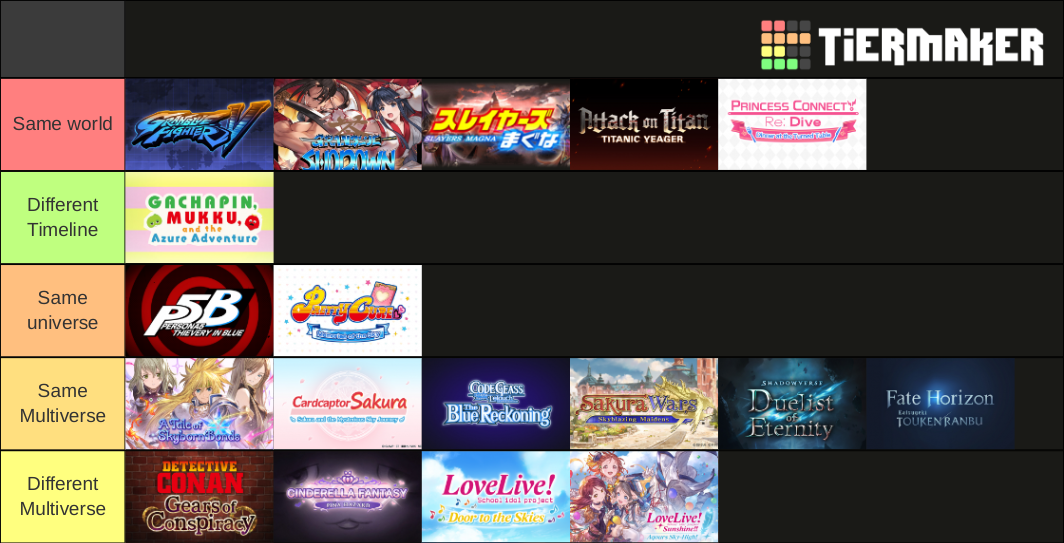Collaborations are a popular thing with long-running games, at least in Japan. They’re often used as a means of cross promotion with existing properties, or just plain promotion of new properties. They tend to be promotions of both sides: the players of the game the collab might check out the other thing, and fans of that other thing might come play this game. I say “thing” because they could be other games, or a movie, anime, or whatever (Final Fantasy Brave Exvious famously had a collaboration with…Adriana Grande).
That’s all well and good, but in an RPG of some sort, those collabs often come with a some sort of story. Since these collabs might not even be in the same genre, they might try to justify their inclusion into the RPG. The lazy way is just to use a dimensional portal, or some other use of Multiverse; for example, this is what is used in Dragalia Lost, though at least this is justified already from the game’s story (and Fire Emblem Heroes as well, which was actually used to some good effect in the last collab). But not all games use this, at least not exclusively.
Today we’re going to look at Granblue Fantasy’s inclusion of collabs into its story (or rather, have already looked at, because that’s what the image at top is). This game uses pretty much every way you might think to include characters from other franchises in a way that isn’t too crazy:
- First, those franchises are considered already a part of its world. Some of these aren’t too jarring, since they are already medieval fantasies, like Princess Connect or Slayers. But Street Fighter (modern) or Attack on Titan (industrial fantasy)? At least GBF can justify this by saying it’s just another isolated island in the sky.
- We do have one isolated example of merely being a different timeline. This is easy to do, since Gachapin and Mukku are just characters, rather than using an entire fictional work. Also, it’s from a comedy event, so things don’t need to make sense.
- The next is same universe, but different worlds. As in, the characters could hop on a space ship and travel normally. This makes sense for Pretty Cure, since that’s a thing that happens in that show (though teleportation works faster, and is what is used here). For Persona, the GBF world is connected to the same collective unconscious as the Persona series. (This also has the implication that PreCure and Persona are the same world.)
- This next one – same multiverse – is what I described previously. In GBF all of these examples use the same effect for how the characters get to the GBF world, so that implies that it’s the same mechanism. (I don’t know why the Shadowverse collab used this, but it did.)
- The last one is a little more off. I used “different multiverse” just because it’s a different mechanism (in story). In those, the various characters don’t get physically transported to the GBF world. It’s basically a “it was just a dream” plot device. This is my least-favorite method – it just seems so cheap.

